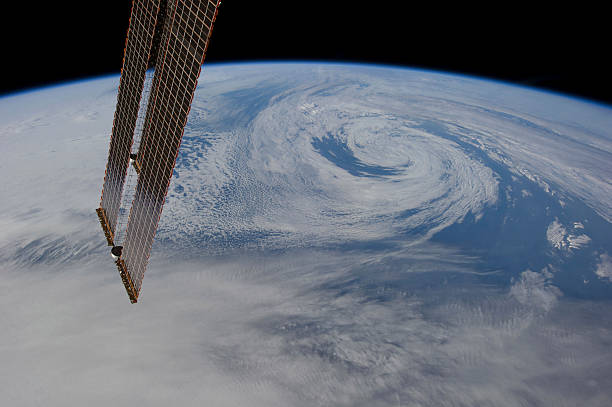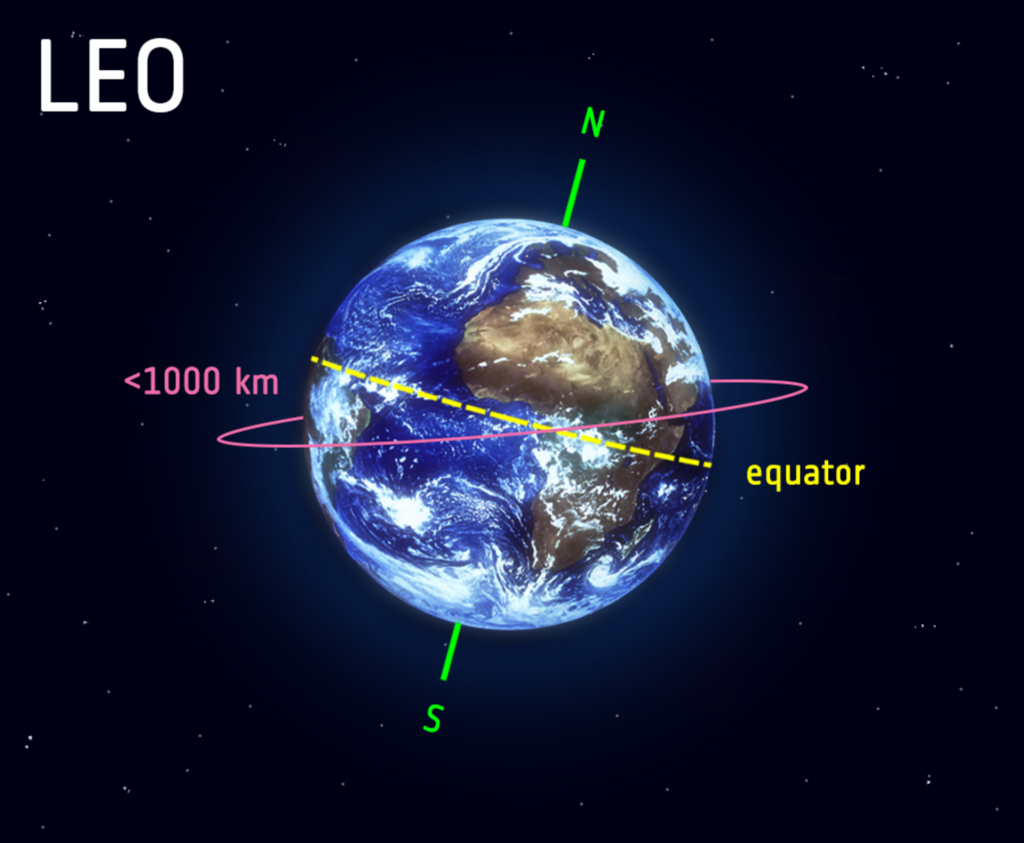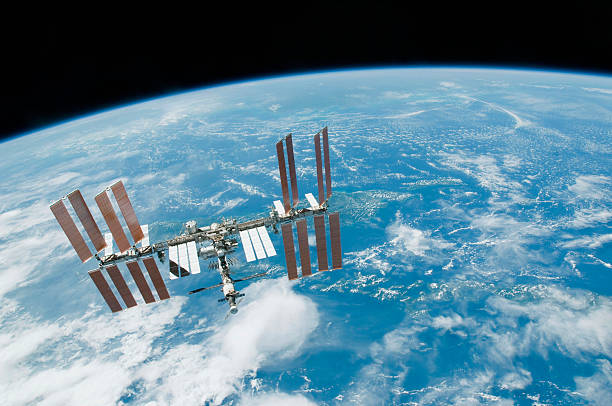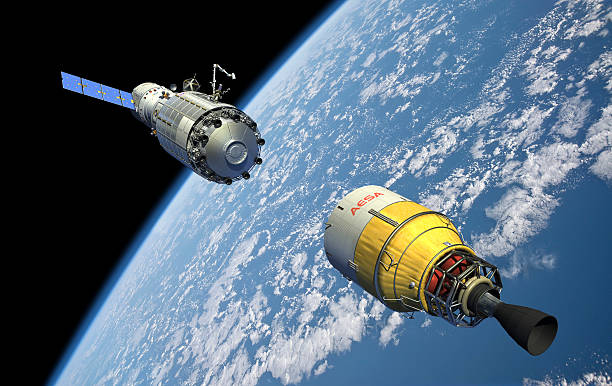Ever gazed up at the endless tapestry of stars and wondered what secrets they hold? Have you ever dreamed of soaring beyond the clouds, experiencing the weightlessness and awe-inspiring spectacle of space? Well, the answer might be closer than you think, thanks to a fascinating realm called Low Earth Orbit (LEO).
But what exactly is this mysterious orbit? How does it work, and what fascinating facts lurk within its boundaries? Join me on this cosmic journey as we delve into the world of LEO, exploring its definition, unraveling its underlying theory, and uncovering some mind-blowing facts that will leave you starry-eyed (quite literally!).
Understanding the Orbit Closest to Home

Low Earth Orbit (LEO) is the closest orbit to home for humans and satellites alike, characterized by altitudes ranging from 200 to 2,000 kilometers above sea level. Compared to other orbits, LEO provides several advantages, such as easy accessibility for crewed missions, lower energy requirements for maintaining satellites, and higher bandwidth communications capabilities. Within LEO, satellites experience frequent contact with Earth’s atmosphere, which can lead to slight alterations in their orbits through atmospheric drag. Key features of LEO include:
- Altitude: Between 200 km and 2,000 km above mean sea level
- Period: Approximately 90 minutes per orbit
- Speed: Around 7.8 km per second
- Useful for: Remote sensing, satellite imaging, and communication services.
Understanding the nature of LEO helps contextualize the broader landscape of space exploration and the variety of orbits that enable humanity to explore and utilize space resources.
ALSO READ: The Basics of Rocket Propulsion: Exploring the Principles Behind Rocket Engines
What is an Orbit?
An orbit is a regular, repeating path that one object in space takes around another one, and the object in an orbit is called a satellite. Orbits come in different shapes, but all orbits are elliptical, which means they are an ellipse, similar to an oval. Satellites dance in space, following elliptical paths called orbits. These orbits exist thanks to a tug-of-war between the satellite’s momentum and Earth’s gravity. The speed and mass of the objects determine the shape and distance of the orbit, with some satellites like the Moon coming closer and farther in their travels. The closest point is the perigee, the farthest is the apogee, and the whole journey is known as the period. So next time you look up, remember these celestial waltzes happening above!
Imagine tossing a ball into the air. It ascends, reaches a peak, and then falls back down to Earth, pulled by the invisible force of gravity. Now, imagine throwing the ball with enough force that it doesn’t fall back. Instead, it continues moving sideways at such a speed that it constantly falls “around” the Earth, never quite touching the ground. This, in essence, is the concept of an orbit. Planets, moons, and even artificial satellites like those in LEO all follow this principle, each occupying their own specific path around a larger celestial body.
What is Low Earth Orbit?

Low Earth Orbit (LEO) is an orbit around Earth characterized by satellite orbits that have an average altitude of less than 2,000 kilometers (approximately 1,200 miles) above the Earth’s surface. These orbits typically have periods of 128 minutes or fewer, resulting in at least 11.25 orbits per day and travel at a speed of around 7.8 kilometers per second. LEO is home to numerous satellites, including those used for communication, navigation, weather forecasting, and scientific research. The International Space Station (ISS) operates in low earth orbit, and many proposed future space platforms will also occupy this region.
The Theory Behind the Low Earth Orbit
The theory behind the orbit is based on the force of gravity, which is the same force that holds us to the surface of the planet. Orbits are possible due to the force of gravity, and the speed required to keep an object in orbit depends on the altitude of the orbit. Low Earth Orbit (LEO) is an orbit around Earth with an altitude of less than 2,000 kilometers (approximately 1,200 miles) above the Earth’s surface and a period of 128 minutes or less, making at least 11.25 orbits per day.
To launch a satellite into Low Earth Orbit, two tasks must be performed. First, we need to raise the altitude of the satellite to 400 km above the surface of the Earth. Second, we need to increase the horizontal speed of the satellite so that gravity curves its path into a circular orbit. The kinetic energy required for LEO constitutes 89% of the total energy needed for orbit, with gravitational potential energy accounting for just 11 percent.
Low earth orbit is the most common type of orbit, but not the only one. Satellites in low earth orbit move rapidly across the sky, making tracking challenging from ground stations. Therefore, LEO satellites often function as part of larger constellations to provide continuous coverage. In addition, Low earth orbit satellites require frequent adjustments to maintain their orbits, which can be costly and time-consuming.
Satellites in Motion

Satellites in low Earth orbit (LEO) move at a blisteringly fast pace, traveling at roughly 17,500 miles per hour (7.8 kilometers per second). Due to this speed, they complete one full orbit around Earth approximately every 90 minutes, resulting in about 16 orbits daily. This rapid movement contrasts with geostationary satellites, which hover over a specific point on Earth’s surface, completing one orbit every 24 hours. The speed required to maintain an LEO orbit varies depending on the altitude, with higher speeds necessary for lower orbits.
Despite the quick pace, LEO offers advantages for various applications, such as satellite imagery and communication services. It’s important to note that the increasing growth in satellite debris in LEO has raised concerns about space sustainability. To address this issue, initiatives such as the Astroscale ADRAS-J mission have been launched to inspect and clean up debris, highlighting the importance of responsible space operations and debris mitigation efforts in LEO and beyond.
Why Low Earth Orbit?
Low Earth orbit (LEO) offers several advantages that make it a popular choice for satellite deployment. LEO’s close proximity to Earth, with an altitude ranging from 200 to 2,000 kilometers, allows for high-bandwidth and low-latency communication, making it suitable for applications such as global internet coverage and remote area connectivity. Additionally, LEO is commonly used for satellite imaging, as the closer proximity to the Earth’s surface enables higher resolution images.
Furthermore, satellites in LEO are more accessible for crew and servicing, which is beneficial for missions such as the International Space Station (ISS). The lower energy requirement for placing a satellite into LEO and the reduced need for powerful amplifiers for successful transmission also contribute to its appeal for communication applications. Despite these advantages, LEO satellites require periodic re-boosting to counteract orbital decay or the launching of replacements, and they have a small field of view, necessitating a network or constellation of satellites to provide continuous coverage.
ALSO READ: Top 10 Most Fascinating Exoplanets Ever Discovered… Will they Reveal Life’s Secrets?
What’s Beyond Low Earth Orbit?
Forget the near-Earth neighborhood! While Low Earth Orbit (LEO) buzzes just 160-2,000 kilometers up, beyond low earth orbit stretches across millions of kilometers, encompassing a diverse range of cosmic habitats. Imagine orbits like stepping stones, each with unique purposes. Medium Earth Orbit (MEO) houses navigation wonders like GPS, while Geosynchronous Orbit (GEO) keeps communication satellites hovering over specific Earth spots, perfect for TV broadcasts. Highly Elliptical Orbits (HEO) take on stretched paths, while the Moon circles us at a comfortable 384,400 kilometers. And that’s just the beginning! The vast solar system and even interstellar space hold even more orbits, beckoning exploration and scientific discovery.
The realm of space exploration encompasses a diverse array of orbits and destinations, each with its own unique characteristics and potential applications. From the bustling activity of Low Earth Orbit (LEO), where satellites facilitate vital communication, navigation, and observation services, to the boundless frontiers beyond, where human space exploration endeavors seek to push the boundaries of our understanding and presence in the cosmos, the journey into space is a testament to human ingenuity and ambition. As technology advances and our knowledge of the universe expands, the possibilities for exploration and discovery both within and beyond LEO continue to inspire and captivate us, offering a glimpse into a future where the stars are within reach.
